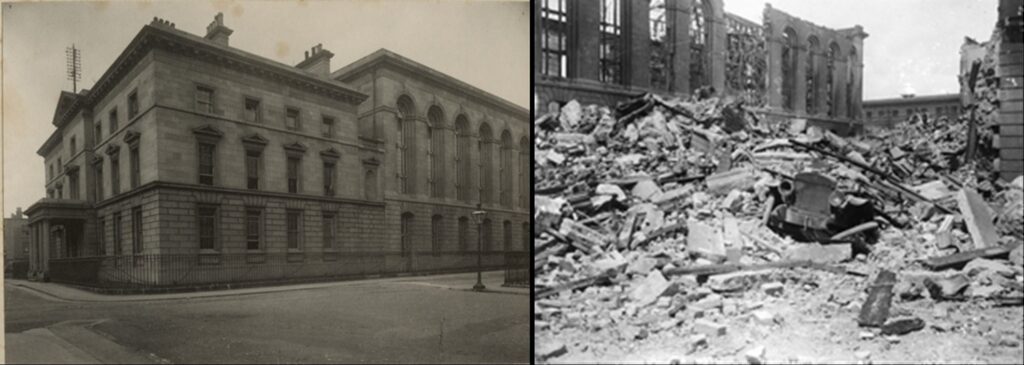Seeking Expressions of Interest
The National Archives will host a unique event at Kew on 17 September 2024, championing repositories in Britain that hold Irish records. In collaboration with our partners in the Virtual Record Treasury of Ireland research programme (VRTI), we aim to bring together institutions eager to share knowledge of their Irish collections – and to help a ground-breaking archival recovery effort.
The event will be an opportunity for the VRTI team to meet colleagues from repositories across Britain that could contribute to our collective work in rebuilding virtually the collections that were lost in the destruction of the Public Record Office of Ireland in 1922. Some financial support to cover attendance costs will be available.
Our aim is to introduce the VRTI to the archival sector in Britain and develop a detailed understanding of collections that relate to Ireland held in Britain. We are seeking Expressions of Interest to attend this event. Proposals for short presentations (10 minutes) on relevant record collections are also welcome.
Please note that the deadline for expressing an interest is 10 May 2024.
Background
On 30 June 1922 the Public Record Office of Ireland was destroyed in the opening battle of the Irish Civil War. In a single afternoon the archival records of seven centuries of Irish history were lost in a fire that destroyed most of the building.
Now, exciting new research is helping to repair this cultural loss. Launched on the centenary of the destruction in June 2022, the VRTI is an award-winning partnership of historians, archivists and computer scientists reuniting records from across Ireland, Britain, and beyond, to virtually reconstruct the lost building and its contents.

The Public Record Office of Ireland before and after 30 June 1922. © National Archives of Ireland, Mills Album (left image), and Irish Architectural Archive (right image).
Deep connections between Britain and Ireland created rich paper trails between the two countries. Many archives in Britain hold the papers of senior politicians and administrators, or prominent landowning families with extensive Irish connections.
We are interested in collections from the medieval to the modern period, of whatever scale. Records that help us to reimagine the Irish administration are of particular interest, such as official, financial, and legal documents, as well as estate records, maps, and the whole miscellany of papers that embodied the collection as it was.
The Virtual Record Treasury of Ireland (VRTI)
Hosted at Trinity College Dublin, the VRTI has 5 Core Partners and over 70 Participating Institutions from across the world. The National Archives (UK) is a Core Partner, alongside the National Archives Ireland, the Public Record Office of Northern Ireland, The Irish Manuscripts Commission and the Library of Trinity College Dublin. They are joined by many Participating Institutions who contribute their knowledge and collections to create this unique digital assemblage. In 2023 the Archives and Records Association awarded the prestigious Ellis Prize to the VRTI for its ground-breaking work and partnership approach.
The Virtual Treasury project began with two simple questions: what records, held in other repositories, could serve as replacements for those destroyed in 1922? Could computer science research allow these scattered replacements to be digitally reunited? The answer to both questions was overwhelmingly positive and the result is the Virtual Record Treasury of Ireland.
Significant research effort has created a digital infrastructure that links transcripts, copies, calendars and related records from their current repository to the originals that perished in 1922. It is rare for a collection from one single repository to act as a complete replacement for a series destroyed in 1922, so composite collections have been reassembled from multiple sources. Through the work of computer scientists, historians, archivists, conservators, and heritage scientists, the VRTI continues to diversify these links.